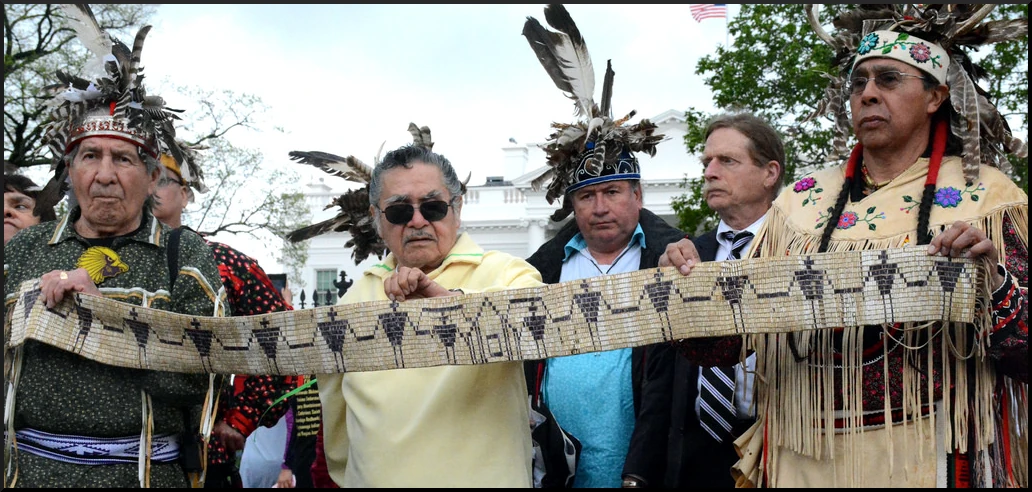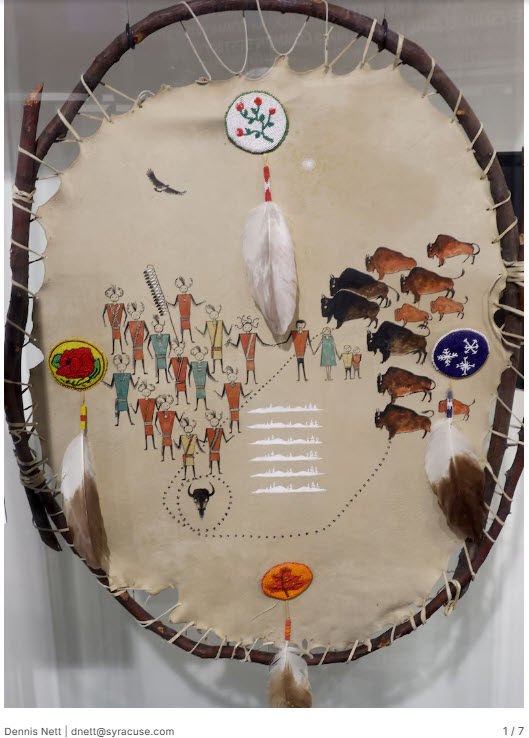
Guardians of the Earth: The Onondaga Nation’s Enduring Struggle to Preserve Sacred Lands
ONONDAGA TERRITORY, NEW YORK – In the heart of what is now upstate New York, amidst rolling hills and the vast expanse of a historically significant lake, lies the ancestral homeland of the Onondaga Nation. For thousands of years, long before European contact transformed the landscape and introduced the concept of land ownership, the Onondaga people have been the spiritual and political center of the Haudenosaunee Confederacy, also known as the Iroquois Confederacy. Their very identity, culture, and spirituality are inextricably linked to this land – a connection that runs deeper than mere possession, resonating with the sacred echoes of their ancestors and the vital pulse of Mother Earth.
Today, this profound, unbroken bond fuels an enduring and often challenging struggle for preservation. The Onondaga Nation, through generations of tireless advocacy, legal battles, and cultural revitalization, stands as a poignant symbol of Indigenous resilience, fighting not just for territory, but for the very soul of their people and the health of the planet.

A History Etched in the Land
The Onondaga Nation’s historical footprint once spanned millions of acres across what is now New York State, serving as the "Central Fire" of the Haudenosaunee, where the Great Law of Peace was born and continues to guide their governance. Their understanding of land is rooted in the "Original Instructions" – a spiritual mandate to be stewards, not owners, of the natural world, ensuring its health for the benefit of the "Seventh Generation" yet to come.
However, centuries of colonial expansion, broken treaties, and coercive land deals systematically stripped the Onondaga of their ancestral domain. The Canandaigua Treaty of 1794, signed between the Haudenosaunee and the fledgling United States, promised to secure their remaining lands "forever." Yet, within decades, this promise was shattered by an insatiable hunger for territory. Today, the Onondaga Nation’s territory is a mere fraction of its original size, comprising approximately 7,300 acres, a stark reminder of historical injustices.
Despite this profound dispossession, the Onondaga have never relinquished their inherent sovereignty or their spiritual ties to the broader ancestral lands, particularly those areas imbued with deep cultural and historical significance. These include ancient burial grounds, ceremonial sites, pristine forests, and the lifeblood of their territory: Onondaga Lake.
Onondaga Lake: A Sacred Scar
Perhaps no single site embodies the Onondaga Nation’s preservation struggle more powerfully than Onondaga Lake. Known as "Honandaga" or "the place of the Onondaga" in their language, the lake was once a pristine, bountiful source of sustenance and spiritual renewal. It was central to their creation stories, a place of healing and gathering.
Then came the industrial age. For over a century, the lake became a dumping ground for industrial waste, primarily from chemical companies like Allied Chemical (later Honeywell). It earned the notorious distinction of being one of the most polluted lakes in America, a toxic soup of mercury, chlorides, benzene, and other hazardous chemicals. Its once vibrant ecosystem collapsed, and its waters became unsafe for any contact, let alone consumption or ceremony.
"Our ancestors swam in that lake, drank from it, fished from it. It was part of us," explains Jake Edwards, an Onondaga Nation Council member, his voice heavy with the weight of history. "To see it so desecrated, so poisoned, was not just an environmental tragedy, but a spiritual assault on our people."

The Nation has been at the forefront of the fight to clean up Onondaga Lake for decades. They launched a landmark land claim lawsuit in 2005, seeking not monetary damages, but the return of their ancestral lands and, crucially, a comprehensive cleanup and restoration of the lake and its surrounding environment. While the lawsuit faced legal hurdles, it galvanized public attention and pressured polluters and state agencies to take more aggressive action.
Today, while some remediation efforts are underway, the lake remains far from fully restored, and the Onondaga continue to monitor the progress with a critical eye, emphasizing that true healing requires more than just capping toxins – it requires restoring the ecological balance and the sacred relationship. "It’s not just about removing the chemicals," says Tadodaho Sid Hill, the spiritual leader of the Haudenosaunee Confederacy. "It’s about restoring the life, the spirit of the lake, so our future generations can once again drink its waters and swim in its depths."
Beyond the Lake: Protecting Ancestral Landscapes
The fight for Onondaga Lake is emblematic of a broader, ongoing effort to protect other sacred sites and ancestral lands from various threats. These include:
- Development Pressures: As urban sprawl encroaches, ancient burial grounds, ceremonial sites, and vital ecosystems are constantly under threat from commercial and residential development. The Nation diligently monitors development proposals and advocates for the protection of culturally sensitive areas.
- Resource Extraction: While less prevalent in their immediate vicinity, the broader region faces threats from natural gas fracking, mining, and logging, all of which can severely impact water quality, forest health, and sacred landscapes. The Onondaga remain vocal opponents of practices that prioritize profit over environmental integrity.
- Climate Change: The Onondaga Nation recognizes climate change as a direct threat to their traditional ways of life and the delicate balance of their ancestral lands. Changes in weather patterns, impact on plant life (like the sacred Three Sisters – corn, beans, squash), and disruptions to wildlife cycles are direct concerns. Their traditional ecological knowledge (TEK) offers valuable insights into sustainable practices that can help mitigate these impacts.
Strategies for Preservation: Sovereignty, Education, and Collaboration
The Onondaga Nation employs a multi-faceted approach to land preservation, rooted in their unwavering commitment to sovereignty and their responsibility as Earth’s guardians:
-
Asserting Sovereignty and Legal Rights: The Nation consistently asserts its inherent sovereignty, using legal avenues and diplomatic engagement to protect its rights. While their 2005 land claim lawsuit was dismissed on political grounds, it set a precedent and continues to inform their advocacy. They also work to educate federal and state governments about their treaty rights and the sacred nature of their ancestral lands.
-
Cultural Revitalization and Education: A core strategy is to strengthen their cultural practices and language, ensuring that the younger generations understand their deep connection to the land. Ceremonies, traditional teachings, and language immersion reinforce the sacredness of the natural world. They also engage in public education, sharing their perspective on environmental stewardship with non-Native communities, emphasizing that the health of the land affects everyone.
-
Environmental Stewardship and Traditional Ecological Knowledge (TEK): The Onondaga Nation actively practices environmental stewardship on their remaining territory, implementing sustainable forestry, agriculture, and water management. They are increasingly sharing their traditional ecological knowledge – centuries of accumulated wisdom about living harmoniously with nature – with academic institutions and environmental organizations, offering a blueprint for sustainable living.
-
Strategic Partnerships: The Nation has forged alliances with environmental groups, universities, and other Indigenous nations. These partnerships amplify their voice, provide scientific expertise, and build a broader coalition for environmental justice and land preservation.
A Vision for the Future
The Onondaga Nation’s struggle for sacred land preservation is more than just a local fight; it is a microcosm of a global challenge to reconcile human progress with environmental responsibility and historical justice. Their vision is not one of exclusion, but of healing and coexistence – a future where the land is respected, its waters run clean, and its bounty is shared sustainably.
As Oren Lyons, Faithkeeper of the Onondaga Nation, frequently articulates, "We are speaking for the natural world. We are speaking for the trees, the rivers, the animals, and the future generations." Their message resonates with increasing urgency in a world grappling with climate change, biodiversity loss, and resource depletion.
The path ahead remains challenging. The legal and political landscapes are complex, and the threats to sacred lands are ever-present. Yet, the Onondaga Nation stands firm, guided by the wisdom of their ancestors and their inherent responsibility to the Earth. Their unwavering commitment to protecting their sacred lands serves as a powerful reminder that true wealth lies not in material possessions, but in the health and vitality of the natural world, a legacy to be cherished and preserved for all generations to come. Their story is a beacon of hope and a call to action, urging all people to listen to the Earth and recognize the profound wisdom held by its original guardians.


